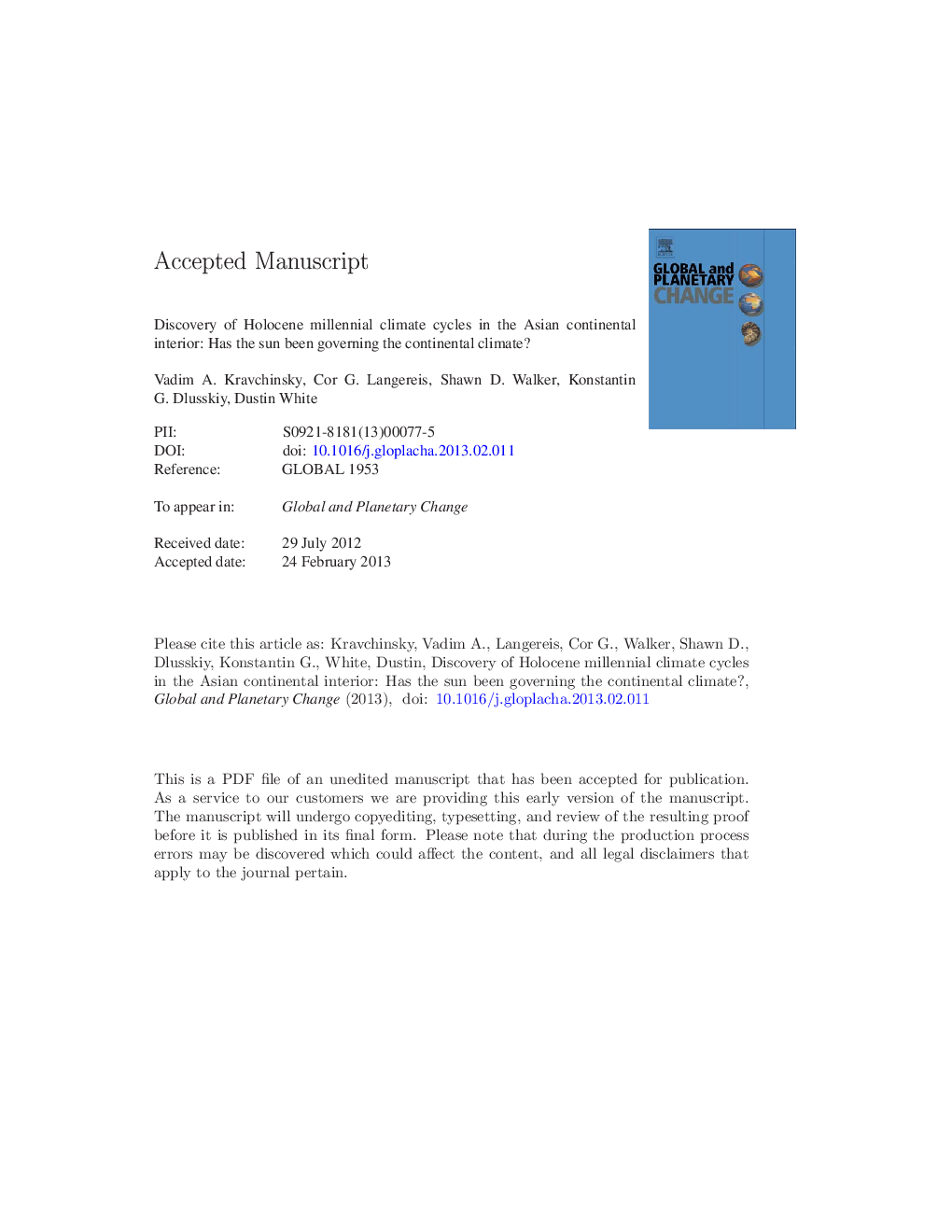| Article ID | Journal | Published Year | Pages | File Type |
|---|---|---|---|---|
| 6348333 | Global and Planetary Change | 2013 | 41 Pages |
Abstract
We conducted a high-resolution study of a unique Holocene sequence of wind-blown sediments and buried soils in Southern Siberia, far from marine environment influences. This was accomplished in order to assess the difference between North Atlantic marine and in-land climate variations. Relative wind strength was determined by grain size analyses of different stratigraphic units. Petromagnetic measurements were performed to provide a proxy for the relative extent of pedogenesis. An age model for the sections was built using the radiocarbon dating method. The windy periods are associated with the absence of soil formation and relatively low values of frequency dependence of magnetic susceptibility (FD), which appeared to be a valuable quantitative marker of pedogenic activity. These events correspond to colder intervals which registered reduced solar modulation and sun spot number. Events, where wind strength was lower, are characterized by soil formation with high FD values. Spectral analysis of our results demonstrates periodic changes of 1500, 1000 and 500Â years of relatively warm and cold intervals during the Holocene of Siberia. We presume that the 1000 and 500Â year climatic cycles are driven by increased solar insolation reaching the Earth surface and amplified by other still controversial mechanisms. The 1500Â year cycle associated with the North Atlantic circulation appears only in the Late Holocene. Three time periods - 8400-9300Â years BP, 3600-5100Â years BP, and the last ~Â 250Â years BP - correspond to both the highest sun spot number and the most developed soil horizons in the studied sections.
Keywords
Related Topics
Physical Sciences and Engineering
Earth and Planetary Sciences
Earth-Surface Processes
Authors
Vadim A. Kravchinsky, Cor G. Langereis, Shawn D. Walker, Konstantin G. Dlusskiy, Dustin White,
